The core principle of sheet metal fabrication is the deep fusion of material characteristics and the coordinated operation of advanced manufacturing equipment. The technology system combines high efficiency and adaptability to achieve micrometer level precision and complex parts manufacturing and large-scale structural parts mass production, covering the full range of applications from precision electronics to heavy machinery equipment.
In modern intelligent manufacturing system, sheet metal fabrication is becoming a key technology engine to promote the development of intelligent and accurate manufacturing through the application of lightweight materials, structural optimization design and multifunctional integration. New product forms are constantly created to reshape traditional industry value chain.
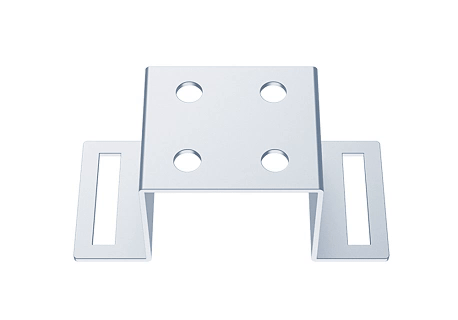
What is sheet metal fabrication?
Sheet metal fabrication refers to the process of cutting, bending and molding metal sheets into a specific shape. Bend sheet metal is one of its core components. This processing technique can be used to manufacture complex three-dimensional structures by precisely controlling the bending angle, curvature and dimensions of metal sheets.
In the production of various components, it is necessary to use bending machines and other equipment to complete the bend sheet metal operation, and then combine subsequent processes such as welding and riveting to achieve the unity of functionality and aesthetics. Sheet metal fabrication not only depends on advanced numerical control equipment, but also needs to optimize process parameters according to the ductility of the material to ensure the strength and precision of the final product combination.
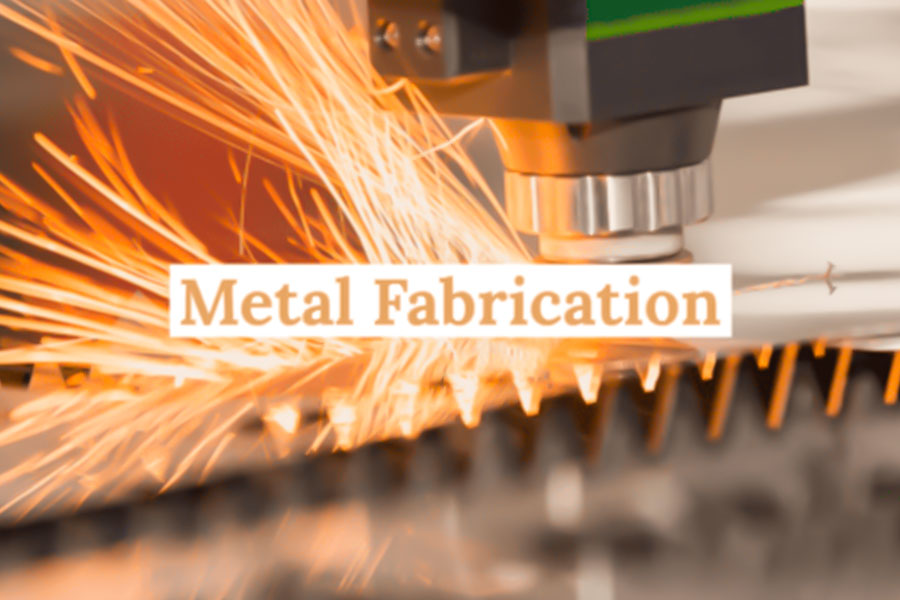
What are the core tools and equipment for sheet metal fabrication?
The core tools and equipment of sheet metal manufacturing mainly include the following types, of which bend sheet metal is the key to complex forming:
- Scissor machine: Used to cut metal sheets into straight contours of the desired size to provide basic material for subsequent bending.
- CNC punching machine: Punching, slotting, or cutting a special shape into a metal plate by means of a die, often used for bending.
- Bending machine: As one of the core equipment of sheet metal, it applies pressure to sheet metal through hydraulic or electric die to complete precise bending operation of sheet metal, supporting the bending of multi-angle and complex shape.
- Bending mold: Includes upper and lower mold, determine bending angle, radius and precision. Common mold types are V-shaped mold, pointy mold, etc., which need to be selected according to the thickness of the plate and technological requirements.
- Press machine: Provides high tonnage pressure for deep stretching or complex surface forming, commonly used in the production of high-strength structural components such as automotive sheet metal parts.
- Laser cutting machine: A kind of high precision thermal cutting equipment which can replace traditional cutting. It is especially suitable for contour processing of shaped plate and improves the efficiency of material preparation before bending.
- CNC bending programming system: Bending paths and parameters (such as bending sequence and compensation values) are generated through CAM software to ensure dimensional consistency in mass production.
- Welding equipment: Such as argon arc and spot welding machine, used to fix bending parts and improve structural strength (such as frame sheet metal parts).
Together, these devices cover the entire process from sheet metal cutting and forming to precision machining, in which bend sheet metal is the core process that connects one to the next, directly affecting the accuracy and function of the finished product.
How does sheet metal fabrication compare to other metal processing techniques?
1.Sheet metal fabrication vs. casting
Advantage comparison:
- Cost and cycle: Sheet metal processing does not require mold opening, suitable for small batch or custom production, low unit cost. Casting requires custom molds that are expensive to start with but suitable for mass production (such as engine cylinder blocks bodies).
- Material utilization rate: Sheet metal after cutting the remaining materials can be reused, utilization rate of over 90%. The material utilization rate is about 70% due to the loss of casting system.
- Lightweight: Sheet metal can be bent and stretched to achieve complex lightweight structures, such as drone frames, while castings are usually in heavier states.
Limitation:
Sheet metal is difficult to process complex cavities or irregular structures, and casting can form hollows with complex overall shapes.
Applicable scenarios:
- Select sheet metal: Rapid prototyping, light weight, small batch customization (such as appliances and chassis).
- Selection of castings: High strength, complex cavity structure (such as mechanical gears, pipeline valves, etc.).
2.Sheet metal fabrication vs. welding
Advantage comparison:
- Integration: Sheet metal directly forms a three-dimensional structure (such as a car body frames) by bending, reducing welding points, and increasing overall strength.
- Precision control: The CNC bending machine can achieve ±0.1mm tolerance, no welding scars on the surface. Welding is easily affected by operation and needs to be polished in subsequent processing.
- Efficiency: Sheet metal is suitable for standardized mass production, while welding is more suitable for repair or partial reinforcement of sheet metal parts.
Limitations:
Welding can connect dissimilar materials (such as metal and plastic), while sheet metal is limited to similar metal sheets.
Applicable scenarios:
- Plate selection: Standardized production of plate parts (such as electrical brackets, shelves, etc.).
- Choose welding: Repair defects, connect dissimilar materials, or temporarily reinforce (such as building steel).
3.Core advantage scene of sheet metal fabrication
- Fast iteration: New product development stage does not require mold investment, greatly shortening the R&D cycle (such as 3D printing+sheet metal hybrid manufacturing).
- Lightweight design: Optimization of structural weight through bending, stretching and other processes (e.g. reduction of weight aerospace components components by more than 30%).
- Production on a large scale: CNC equipment supports a daily production capacity of tens of thousands of pieces (such as mobile phone metal stamping lines).
- Environmental friendliness: Waste recycling rate exceed 95% and carbon emissions are lower than castings (data source: International Metalworking Association report).
Data comparison
| Indicator | Sheet metal fabrication | Casting | Welding |
| Unit cost | Low (no mold cost). | High (dependent on molds). | Medium (relying on manual labor). |
| Production cycle | Short (1-7 days). | Long (2-8 weeks). | Medium (based on complexity). |
| Material utilization rate | 90%-95% | 70%-80% | 85%-90% |
| Typical accuracy | ±0.1mm | ±0.5mm | ±0.2mm |
| Suitable for batch production | From small batch to large scale. | large-scale. | Small to medium batch. |
Sheet metal fabrication has become an ideal choice for small and medium-sized batch production, which requires high accuracy. When a project requires rapid prototyping, lightweight design, or standardized components, sheet metal technology is preferred. If complex cavity structures or large-scale low-cost production are required, casting or welding techniques must be combined. In practice, all three often complement each other (such as sheet metal shell+welded bracket) to meet the complex product needs.
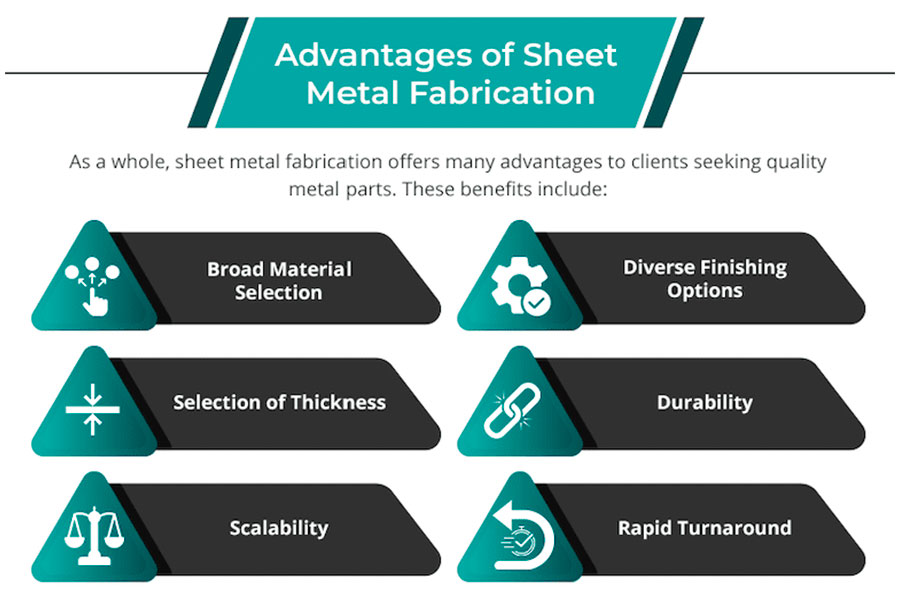
How to choose sheet metal fabrication materials?
In sheet metal fabrication, reasonable material selection is the key to ensure the balance between product performance and cost. Start with sheet the sheet metal gauge chart and related parameters to provide you with a systematic selection guide:
1.Clarify application requirements
- Functional requirements: According to thebearing capacity, corrosion resistance and electrical conductivity of the material, choose different materials.
- Process limitations: For complex sheet metal bend materials, priority should be given to materials with good ductility (e.g. aluminum sheet metal), while for welded structures, material melting points (e.g. stainless steel with higher heat requirements) should be considered.
2.Reference sheet metal gauge chart
The larger the Gauge value, the smaller the actual thickness of the board (such as 16Ga ≈1.5mm, 24Ga ≈0.5mm):
| Material | 16Ga(mm) | 20Ga(mm) | 24Ga(mm) |
| SPCC cold-rolled sheet | 1.5 | 0.9 | 0.6 |
| Aluminum alloy 5052 | 1.6 | 1.0 | 0.7 |
3.Common material characteristics
| Type | Advantage | Typical applications |
| Galvanized steel sheet | Corrosion resistance, low cost. | Outdoor computer box, home appliance box (must meet salt spray testing standards). |
| Aluminum magnesium alloy | Lightweight, good conductivity. | Electronic heat sinks, aerospace components (selected according to hardness requirements). |
| Stainless steel | Antioxidant, heat resistant, antibacterial. | Chemical and medical equipment (need to balance costs and hygiene requirements). |
4.Process parameter adaptation
- Sheet metal bend process: Thin plates (e.g. 24Ga) require molds with smaller V-grooves to prevent cracking, while thick plates (e.g. 16Ga) require additional pressure.
- Welding compatibility: Aluminum plates require inert gas protection for welding, and argon arc welding is recommended for stainless steel (parameters need to be adjusted to material thickness).
- Surface treatment: Galvanized sheet metal can be sprayed directly, while aluminum sheet metal require anodic oxidation pretreatment (process cost differences need to be taken into account in selection).
What fields does sheet metal fabrication mainly serve?
1.Automotive industry
- Application scenarios: Hidden door hinge structure, internal support frame of dashboard, exhaust system, explosion-proof pressure relief valve of battery pack, etc.
- CNC machining processing and 1-2 weeks delivery capability capacity, JS has reduced the automotive company's prototype development cycle by 40%, achieved a 99.2% pass rate with single-use component molding, and strictly adhered to the ASME Y14.5 automotive component tolerance standard.
2.Consumer electronics industry
- Application scenarios: Projector lens focusing mechanism gear set, computer keyboard light guide plate bracket, intelligent hardware structural components, etc.
- In response to the lightweight requirements of electronic products, we have been able to reduce the weight of complex structures by 35% to conventional steel) by innovative use of aviation aluminum, magnesium alloy materials, and laser welding technology
3.Medical equipment industry
- Application scenarios: Surgical robot joint drive plate, CT machine collimator blade, portable ventilator valve assembly, etc.
- JS customizes precision sheet metal components for high-end medical imaging equipment manufacturer, using 304 stainless steel for medical use. By polishing and passivation treatment, antibacterial properties improved by 90% and delivery times is 15% shorter than the original 21 days, helping customers seize market opportunities.
4.Industrial automation equipment
- Application scenarios: Collaborative robot joint protective cover, high-speed surface mount machine feeder shrapnel, etc.
- JS customized high-strength sheet metal structures for an industrial robot manufacturerusing Q355B carbon steel laser cutting. Through intelligent nesting layout technology, the material utilization rate increased to 92% and the overall engineering efficiency increased by 20%.
5.Recyclable energy
- Application scenarios: Wind power variable pitch system guide cover, solar bracket, flow battery electrode plate, etc.
- In a new energy project, JS uses weatherproof steel to process large sheet metal parts, combining laser cutting and bending to ensure stability in harsh environments. Its sustainable manufacturing practices, such as waste recycling, help customers meet environmental goals and reduce carbon emissions.
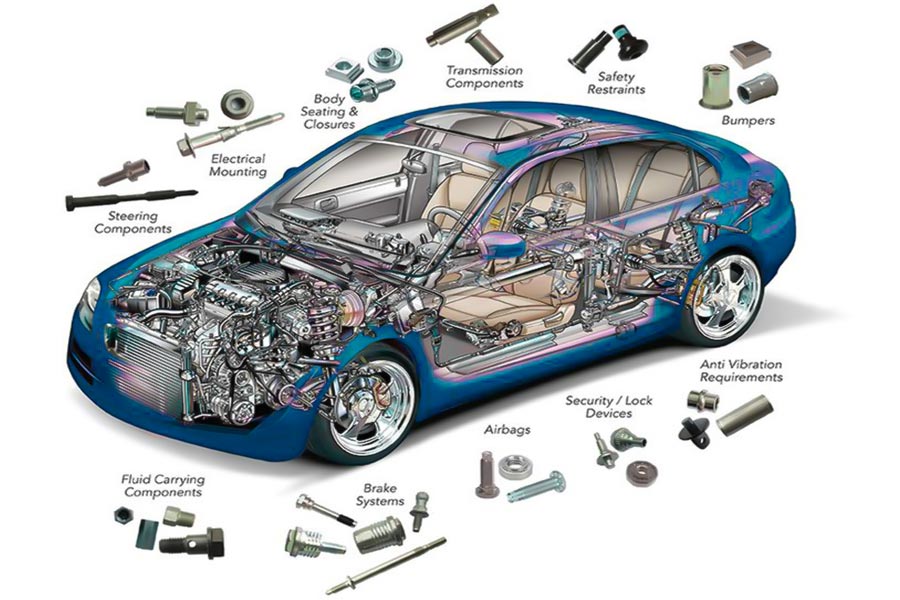
What are the sterilization requirements for surgical robot sheet metal components?
1.Adaptability requirements for sterilization methods
Material compatibility screening
- Stainless steel components (e.g. 304/316L): Suitable for high temperature, high pressure steam sterilization. JS provides a high temperature resistant scaffold for surgical robots with accuracy of ±0.005mm after more than 300 sterilization cycles.
- Aluminum alloy components: Ethylene oxide is recommended for sterilization to avoid high-temperature deformation. After ETO sterilization, the torque performance of a JS joint module remains unchanged.
- Plastics/composites: Radiation sterilization is preferred, and the JS sensor housing is made of PEEK material with a a tensile strength retention rate greater than 95% after irradiation.
Surface treatment strengthening: Sheet metal parts need polishing Ra<0.8μm and passivation (e.g. anodic oxidation). JS cases shows that the process can reduce sterilization residue by 80%.
2.Verification and compliance management
Biocompatibility verification
These ingredients are subject to ISO 10993 series tests (cytotoxicity, allergies, etc.), and JS's needle holder components are sourced from a manufacturer and approved by FDA 510(k).
Sterilization Verification Report
Data on sterilization process parameters (e.g. ETO concentration, irradiation dose) and material performance were provided to shorten the sterilization cycle by 20% without affecting the assurance level of sterilization (SAL 10^-6).
3.Integration of production processes
JS has very strict control over the workshop and the dust-free workshop complies with ISO 7 standards. After sheet metal processing, use ion air, reduce particle residue, combined with automatic packaging and sealing, reduce the risk of secondary contamination.
4.Cost and productivity
- Modular design: JS splits the surgical arm into three separate sterilization units, saving 40% of time compared to traditional holistic disinfection, while meeting the requirement for an emergency delivery within a week.
- Material substitution solution: For high-value components, titanium alloy are recommended in place of stainless steel. While costs increases by 15%, sterilisation life tripled and the comprehensive TCO decreased by 22%.
5.JS typical cases
In the total hip replacement surgery robot project of an international medical giant, JS provided acetabular polishing components using:
- Material: Ti6Al4V titanium alloy sheet (5mm).
- Sterilization plan: Plasma sterilization (to prevent gamma rays from titanium discoloration).
- Performance: After 10 sterilization cycles, the surface roughness was stable at Ra=0.4μm with precision error of less than 0.01mm, helping clients shorten the clinical trial cycle by 3 months.
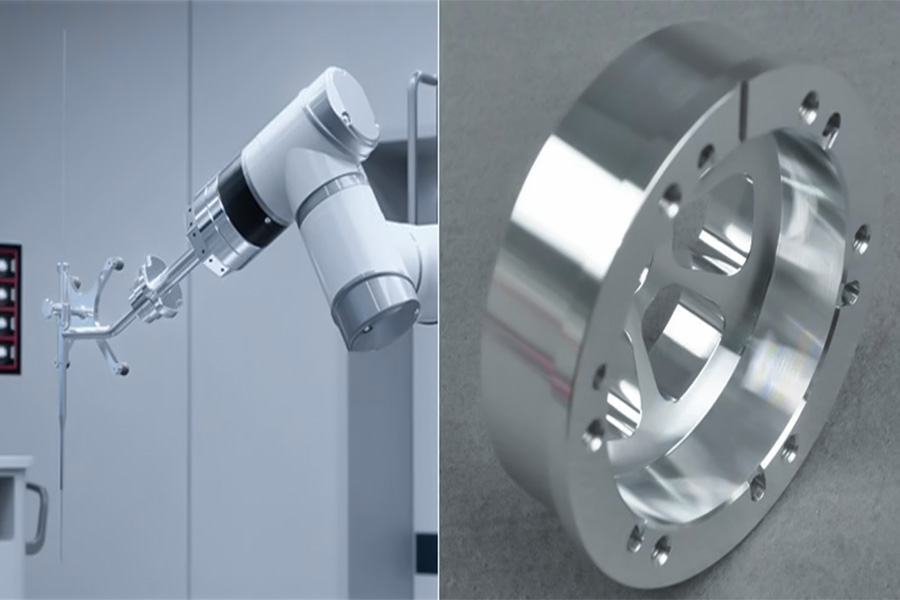
How to replace stainless steel with galvanized sheet metal to achieve the same strength?
1.Choose high-strength alternatives
- High-strength galvanized sheet: Choose high-strength low-alloy steel as the base, its tensile strength can be over 600MPa, close to ordinary stainless steel (such as 304 stainless steel, a tensile strength is about 515MPa).
- Double layer galvanizing process: Aluminum zinc plating is adopted on the surface of cold rolled steel plates to improve corrosion resistance while maintaining the high strength characteristics of substitute material.
2.Sheet metal fabrication technology
- Cold rolling reinforcement: The yield strength of galvanized sheet is increased by cold rolling (When the cold rolling deformation exceeds 30%, the strength can be increased by 20%-30%).
- Annealing control: Use incomplete annealing (such as recrystallization annealing) to balance strength and ductility and avoid excessive softening.
- Surface treatment strengthening: Passivation or phosphorylation of the galvanized layer to reduce the risk of microcracks during sheet metal bending.
3.Structural design
- Ribs/flanges: Design of reinforcement or flange structures in key stress areas of sheet metal parts to enhance bearing capacity through geometric shapes (e.g. car chassis parts).
- Bending angle optimization: Using stair bending (Z bend) instead of right angle bending, scattered stress concentration, improve overall stiffness.
- Curling process: The edges of thin sheets (e.g. 5mm thick galvanized sheet metal with a curl radius ≤1t) are curled to prevent sheet metal bending and enhance bending strength.
4.Welding and connection process
- Resistance welding in place of riveting: On the basis of good galvanized sheet conductivity, spot welding or seam welding can reach more than 80% of the strength of the substrate (welding current needs to be controlled to avoid evaporation of the zinc layer).
- Laser welding: High energy laser welding can reduce the heat effect area, avoid strength attenuation caused by zinc coating melting, and reach joint strength close to stainless steel.
5.Verification and testing
- Tensile test: The yield strength of galvanized sheet ≥355MPa (Equivalent to one-third of the strength of 304 stainless steel).
- Cyclic load test: Simulation of actual working conditions (such as vibration, impact, etc.) to verify that the fatigue life of galvanized sheet metal meets the standards.
- Sheet metal bending rebound compensation: Through die prebending or angle correction, to ensure that the dimensions of the bending accuracy and stainless steel parts.
Key preventive measures
- Avoid excessive bending: Galvanized sheet metal are less malleable than stainless steel and should have a bending radius ≥1.5 times thickness (stainless steel generally ≥1 times).
- corrosion reinforcement: In humid environments, epoxy resin is required to be partially sprayed or coated with an increased thickness (e.g., Dacromet treatment).
How can JS optimize your sheet metal project?
JS as a professional sheet metal fabricators, through the following methods to optimize your sheet metal project:
- High precision machining guarantee: Adopt advanced CNC machining technology, achieve tolerance ±0.005mm, guarantee the dimension precision of sheet metal parts, reduce the need for subsequent assembly and debugging.
- Custom Material Selection: We offer more than 50 metals and composites (such as stainless steel, aluminum sheet metal, copper alloy, etc.) and recommend the best materials based on project requirements, balance strength, corrosion resistance and cost to meet a variety of scenarios from lightweight to heat resistant.
- Efficient production process: Through the intelligent scheduling system, the average sheet metal project delivery cycle will be reduced by 15%. Emergency orders can be quickly responded to within 24 hours while maintaining a 98% on-time delivery rate, helping businesses respond quickly to demand.
- Cost control solutions: Through waste reduction, batch layout, application of automation equipment, sheet metal processing costs can be reduced by less than 20%, and provide a transparent quotation system to help customers allocate budgets.
- Green manufacturing practices: Low energy consumption technology such as laser cutting, combined with 15% energy saving measures, can reduce the carbon emissions during sheet metal fabrication, provide recyclable material choices, in line with sustainable development goals.
Comparison between JS and other sheet metal fabricators
| Optimize dimensions | JS Precision Manufacturing | Peer manufacturer A | Peer manufacturer B |
| Processing accuracy | ±0.005mm | ±0.01mm | ±0.02mm |
| Plate utilization rate | 92% | 85% | 80% |
| Standard delivery cycle | 1-2 weeks. | 3-4 weeks. | 4-6 weeks. |
| Material type | More than 50 types. | 20 types. | 15 types. |
| Cost saving rate | On average 20%. | ≤8%. | Equipment depreciation optimization only. |
| Sustainability certification | ISO 14001 | Not have | Partial Process Environmental Declaration. |
Summary
Sheet metal fabrication, as the cornerstone of modern manufacturing, plays an irreplaceable role in automotive, electronics, aerospace and other fields, from instrument casings to complex structural components, sheet metal parts through bending sheet metal technology has become a key support for innovation in many industries.
Under the trend of customization, choosing a professional partner is the key to complete sheet metal processing efficiently. With 20 years of industry experience and eco-friendly processes, JS has helped clients around the world shorten project cycles by 15% and costs by 20%. Click on the link for exclusive quotes and professional sheet metal solutions to help you seize market opportunities.
Disclaimer
The content on this page is for general reference only. JS Series makes no express or implied warranties regarding the accuracy, timeliness, or applicability of the information provided. Users should not assume that the product specifications, technical parameters, performance indicators, or quality commitments of third-party suppliers are completely consistent with the content displayed on this platform. The specific design feature, material standards, and process requirements of the product should be based on the actual order agreement. It is recommended that the purchaser proactively request a formal quotation and verify product details before the transaction. For further confirmation, please contact our customer service team for professional support.
JS Team
JS is an industry leading provider of customized manufacturing services, dedicated to providing customers with high-precision and high-efficiency one-stop manufacturing solutions. With over 20 years of industry experience, we have successfully provided professional CNC machining, sheet metal manufacturing, 3D printing, injection molding, metal stamping and other services to more than 5000 enterprises, covering multiple fields such as aerospace, medical, automotive, electronics, etc.
We have a modern factory certified with ISO 9001:2015, equipped with over 100 advanced five axis machining centers to ensure that every product meets the highest quality standards. Our service network covers over 150 countries worldwide, providing 24-hour rapid response for both small-scale trial production and large-scale production, ensuring efficient progress of your project.
Choosing JS Team means choosing manufacturing partners with excellent quality, precise delivery, and trustworthiness.
For more information, please visit the official website: jsrpm.com
FAQs
1.What are the characteristics of aerospace sheet metal parts?
Highly accurate and lightweight, titanium/aluminum alloy alloy is often used to meet complex structural requirements through bending forming process, meet airworthiness certification standards, and ensure strength and fatigue resistance performance.
2.What materials are commonly used in sheet metal fabrication?
Common materials are steel (stainless steel, carbon steel), aluminum alloy, copper and galvanized/aluminium steel, which balance strength, weight and corrosion resistance.
3.What are the technical advantages of sheet metal bending?
Sheet metal bending technology can effectively form complex geometric shapes, maintain the ductility and strength of materials, meet high precision design requirements, balance mass production efficiency and cost controllability.
4.What are the production processes for customized sheet metal parts?
Design sampling → Material selection and Cutting → Bending formation → Welding/assembly → Quality inspection → Surface treatment → Delivery.






